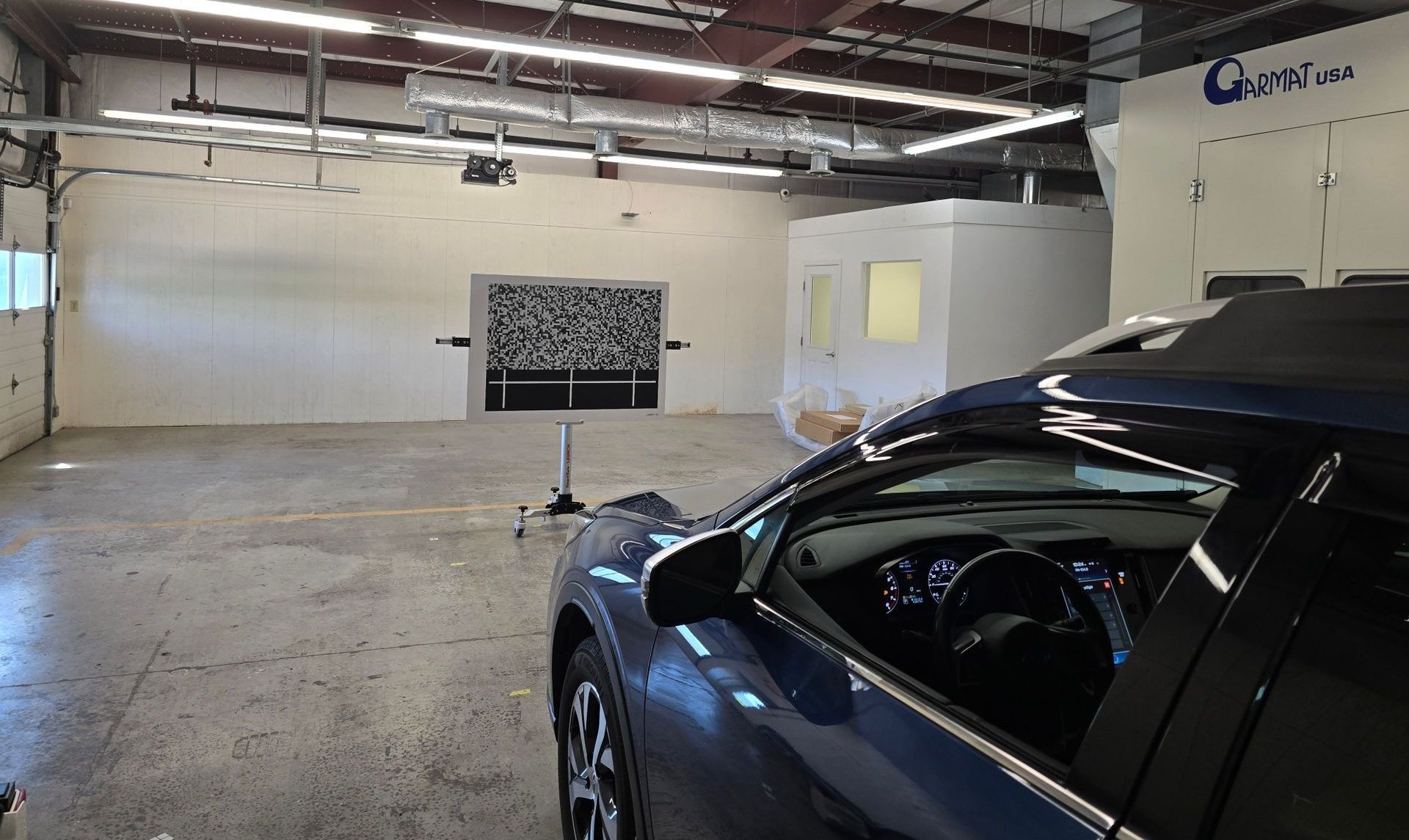VISIT OUR NEW SHOP
2050 E Main St, Salem, VA 24153
14 Passive and Active Ways an ADAS System Works
14 Active and Passive Features of ADAS
Advanced Driver Assistance Systems (ADAS) are a combination of cameras, sensors, and other technology that act as an extra safety net between you and a collision. The idea was based on the fact that humans make mistakes.
In fact, 94% of car accidents are due to human error. That’s a high percentage. So ADAS systems were created to level the field a bit in our favor. ADAS systems were first used in the 1970s, which means that if you own a vehicle, it has some type of ADAS system installed.
All fourteen of the systems listed here are divided into two categories; passive and active. We wanted to help drivers understand ADAS systems so they can better understand the vehicles they drive. As you read you may recognize some of the technology.
Passive ADAS Systems
1. Anti-Lock Braking Systems (ABS)
ABS systems help drivers who begin to skid due to things like hazardous weather conditions like heavy rain or ice. The ABS does this when you apply the emergency brake.
2. Back-Up Camera
The first backup camera was in a 1956 Buick, but they didn’t become mandatory until 2018. They give drivers eyes in the back of their vehicle and help with avoiding collisions.
3. Blind Spot Detection
If you’re driving you know your blind spot. This system uses technologies like radar sensors to let you know when objects are in that blind spot, so you avoid hitting them.
4. Electronic Stability Control (ESC)
This system helps the driver avoid skidding in bad weather conditions. When you brake harshly or jerk your steering wheel are times when the ESC system will take action.
5. Forward Collision Warning (FCW)
FCW alerts the driver if they don’t see something in their way. It could be a sudden deer, or maybe when you’re driving in the fog.
6. Lane Departure Warning (LDW)
LDW is the beeping you hear if you accidentally sway out of your lane.
7. Parking Assistance
If an object is in your way when you are operating at a low speed, this system will warn you.
8. Traction Control System (TCS)
Utilizing both ESC and ABS systems, the TCS helps keep traction with the road while turning or driving curved roads.
Active ADAS Systems
9. Adaptive Cruise Control
This system adjusts your vehicle's speed to match the flow of traffic.
10. Automatic Emergency Braking
If a driver is unable to apply the brakes to avoid something in the way, this system kicks in and does it for them.
11. Emergency Steering
To avoid something in the road, Emergency Steering will kick in to avoid hitting it when you can’t.
12. Lane Keeping Assist and Lane-Centering
Just as the title says, this system helps keep your vehicle in its lane when you can’t.
13. Self Parking
Parallel parking is difficult for some and stressful at times. This system does the hard work.
14. Traffic Jam Assist
This system uses Lane Keeping Assist and Adaptive Cruise Control to help drivers who are stuck in traffic due to construction or rush hour congestion.
Do New Windshields Need an ADAS Calibration?
Yes, they do. That’s why you want to make sure when you're replacing your windshield to choose an expert in ADAS technology. Innovation Auto Glass has been replacing windshields in the Franklin County, Roanoke, Blacksburg, and Botetourt, VA areas for more than ten years.
Give us a call and we can help with any questions you have about ADAS calibration and windshield replacement or repair.

WHY CHOOSE INNOVATION AUTO GLASS?
- Licensed & Insured
- 10+ Years Experience
- Fully Certified Technicians
- Lifetime Warranty
- Preferred Partner of All Insurance Providers
- OEM or Better Quality Auto Glass

Need more information or a free quote?
Visit our NEW SHOP!
2050 E Main St, Salem, VA 24153
Mobile Service Throughout Roanoke County & Surrounding Areas
© 2024 Innovation Auto Glass. Content, including images, displayed on this website is protected by copyright laws. Downloading, republication, retransmission or reproduction of content on this website is strictly prohibited.
All Rights Reserved | Innovation Auto Glass









